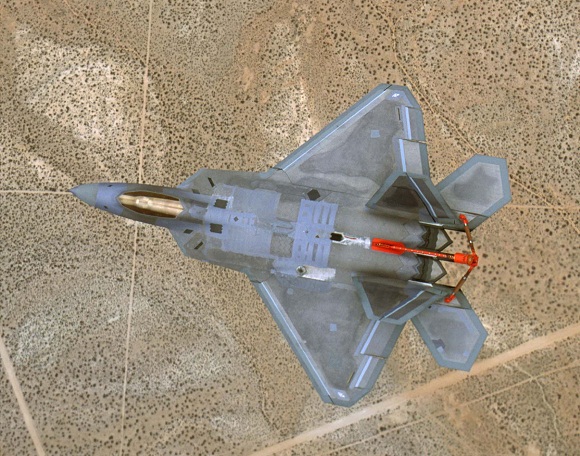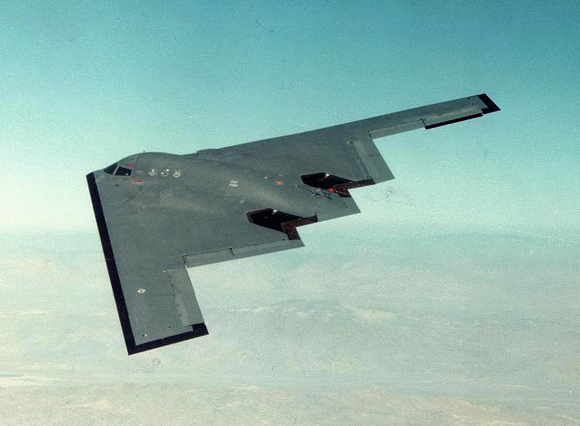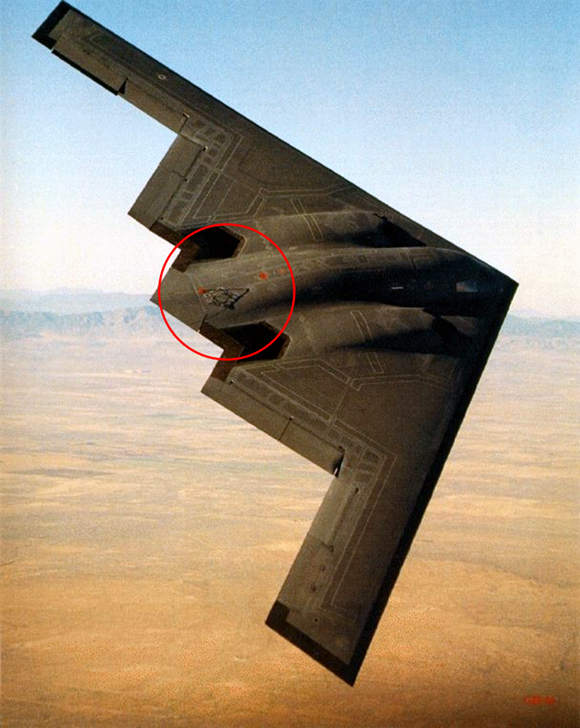It looks like you're using an Ad Blocker.
Please white-list or disable AboveTopSecret.com in your ad-blocking tool.
Thank you.
Some features of ATS will be disabled while you continue to use an ad-blocker.
share:
reply to post by gariac
You are allowed to shoot from the side, because to see the antenna in question you have to be straight on. The shape of the fuselage hides them from any other angle, when they are retracted.
You are allowed to shoot from the side, because to see the antenna in question you have to be straight on. The shape of the fuselage hides them from any other angle, when they are retracted.
Salutations folks, I don't know that these will help but hope they may.
I suspect the first couple are flight test instrumentation similar to this YF-22 below...

I cant make out much detail but there is a definite structure with some type of drogue line and there is clearly an oval access cover in the same general area under discussion.....




Here are a few bits and pieces regarding various comm systems in relation to the Block30 upgrade. I doubt there is anything here but I wanted to try and contribute something...
B-2 Spirit Stealth Bomber, United States of America
Northrop Begins B-2 EHF Satcom Hardware Flight Test
Northrop Grumman Awarded $109M Contract to Redesign B-2 Spirit's Aft Deck
A lot of upgrades still going into the fleet, its good to see.
I suspect the first couple are flight test instrumentation similar to this YF-22 below...

I cant make out much detail but there is a definite structure with some type of drogue line and there is clearly an oval access cover in the same general area under discussion.....




Here are a few bits and pieces regarding various comm systems in relation to the Block30 upgrade. I doubt there is anything here but I wanted to try and contribute something...
B-2 Spirit Stealth Bomber, United States of America
B-2 upgrade programme
Northrop Grumman, the B-2's prime contractor, leads an industry team that is working on modernising the B-2. This is done to ensure that craft remains fully mission capable against evolving worldwide threats. A range of upgrade programmes are working on improving the B-2's lethality; its ability to receive updated target information during a mission, and its ability to collect, process and disseminate battlefield information with joint force commanders or other local first responders worldwide.
In June 2007, Northrop Grumman was awarded a contract to develop an EHF satellite communications capability and computer architecture upgrade for the B-2. The upgrade includes a Lockheed Martin integrated processing unit (IPU). Flight testing with the new systems was completed in July 2009.
US Air Force and Northrop Grumman Corporation completed the system design review of the new software and computing architecture during July 2008. The new architecture allows the B-2's new integrated processing unit (IPU) to communicate with the aircraft's processing applications.
This new architecture provides high-speed data handling environment required to implement future B-2 capabilities such as an EHF satellite communications system, and also provides B-2 the ability to destroy moving targets.
Radar
The Raytheon AN/APQ-181 covert strike radar, operating at J band (Ku band), is a multi-purpose radar with terrain following and terrain avoidance modes. Testing at Edwards Air Force Base has demonstrated reliable terrain following at altitudes down to 200ft.
In April, 2009 Northrop Grumman Corporation delivered to the US Air Force the first operational B-2 Spirit stealth bomber to be equipped with newly modernised radar. The aircraft was officially handed off to the air force on at Whiteman Air Force Base, the operational home of the B-2 fleet and the 509th Bomb Wing.
The updated aircraft will be used by air force to conduct additional field testing of the radar, and the data gathered from these decisions will support future fielding decisions.
The B-2 radar modernisation programme replaces the aircraft's original radar system with one that incorporates technology improvements that have occurred since the B-2 was originally designed in the early 1980s.
In November 2002, Raytheon was awarded a contract to develop a new Ku-band AESA (active electronically scanned array) antenna for the B-2 radar to avoid interference with commercial satellite systems after 2007.
Flight tests with new radar began in October 2007 and continued until 2008. Installation of the new antenna on the B-2 fleet is to be completed by 2012.
Navigation and communications
The B-2's navigation suite includes a Rockwell Collins TCN-250 tactical air navigation system (TACAN) and a VIR-130A instrument landing system.
"The B-2 Spirit stealth bomber has the capacity to carry up to 40,000lb of weapons, including conventional and nuclear weapons."
The communications equipment is supplied by Rockwell Collins. A Milstar military strategic and tactical relay satellite communications system is installed in block 30 aircraft.
The aircraft have been upgraded with Link 16 communications link.
Northrop Begins B-2 EHF Satcom Hardware Flight Test
Northrop Grumman has begun flight testing of the new computing hardware and communications infrastructure for the US Air Force's B-2 stealth bomber.
The new B-2 extremely high-frequency (EHF) Satcom Hardware will enable the bomber to send and receive battlefield information by satellite more than 100 times faster.
The flight test programme is part of Increment 1 of the USAF's B-2 EHF satellite communications programme.
The flight test programme demonstrated that the EHF increment 1 computer upgrade system has reached a maturity level to allow to conduct test sorties beyond the Edwards AFB local area.
The EHF Increment 1 system that took the flight test includes a new integrated processing unit to replace up to a dozen current stand-alone avionics computers on the B-2.
It also includes a new disk drive unit to enable transfer of EHF data onto and off the B-2 and a network of fibre optic cables to support the high speed data transfers within the aircraft.
The B-2 is the only US aircraft that combines stealth, long-range, large-payload and precision weapons in a single platform
Northrop Grumman Awarded $109M Contract to Redesign B-2 Spirit's Aft Deck
Redesign Promises to Reduce Maintenance Costs, Improve Aircraft Availability
PALMDALE, Calif., Nov. 9, 2011 (GLOBE NEWSWIRE) -- Northrop Grumman (NYSE:NOC) recently won a $109 million contract from the U.S. Air Force to produce a redesigned aft deck for the B-2 stealth bomber, further enhancing the world's most survivable aircraft.
The B-2 Spirit's aft deck, a metallic panel on the bomber's upper surface that shields its composite airframe from the heat of engine exhaust, will be redesigned for long-term reliability and affordability. The retrofit will enable the aircraft to span normal long-term maintenance cycles without additional services or repairs.
The newly redesigned structure reflects Northrop Grumman's thorough thermal and structural analysis of the aft deck, its adjoining structures and the operating environment.
"Implementing a redesigned aft deck is an important part of guaranteeing the long-term viability of the B-2," said Dave Mazur, Northrop Grumman's vice president of Long Range Strike and B-2 program manager. "We are committed to assisting the Air Force in developing and implementing proactive solutions that are in the best interest of the B-2 fleet."
A lot of upgrades still going into the fleet, its good to see.
edit on 17-10-2012 by Drunkenparrot because: (no reason given)
new topics
-
Ditching physical money
History: 53 minutes ago -
One Flame Throwing Robot Dog for Christmas Please!
Weaponry: 1 hours ago -
Don't take advantage of people just because it seems easy it will backfire
Rant: 1 hours ago -
VirginOfGrand says hello
Introductions: 2 hours ago -
Should Biden Replace Harris With AOC On the 2024 Democrat Ticket?
2024 Elections: 2 hours ago -
University student disciplined after saying veganism is wrong and gender fluidity is stupid
Education and Media: 5 hours ago -
Geddy Lee in Conversation with Alex Lifeson - My Effin’ Life
People: 6 hours ago -
God lived as a Devil Dog.
Short Stories: 6 hours ago -
Police clash with St George’s Day protesters at central London rally
Social Issues and Civil Unrest: 8 hours ago -
TLDR post about ATS and why I love it and hope we all stay together somewhere
General Chit Chat: 9 hours ago
